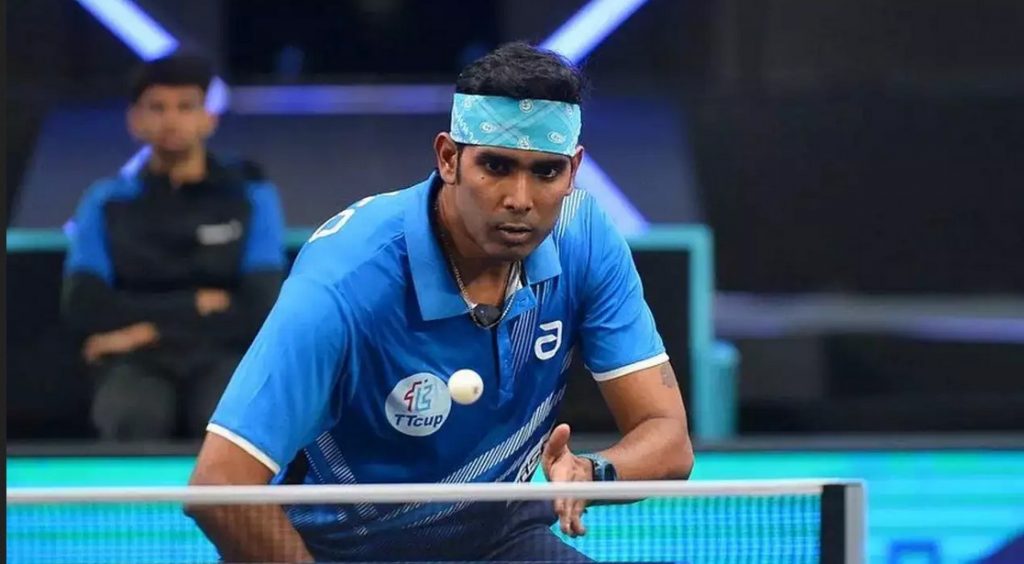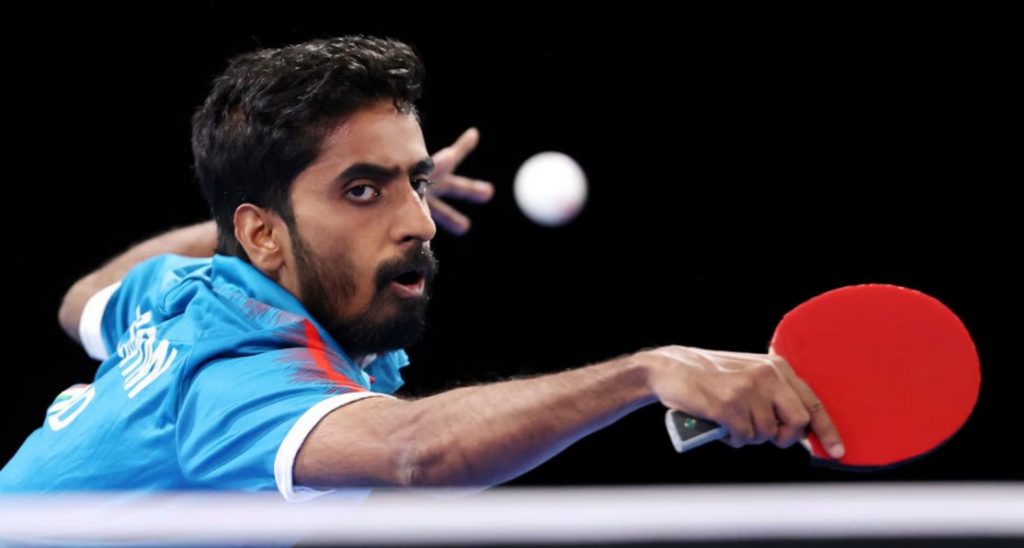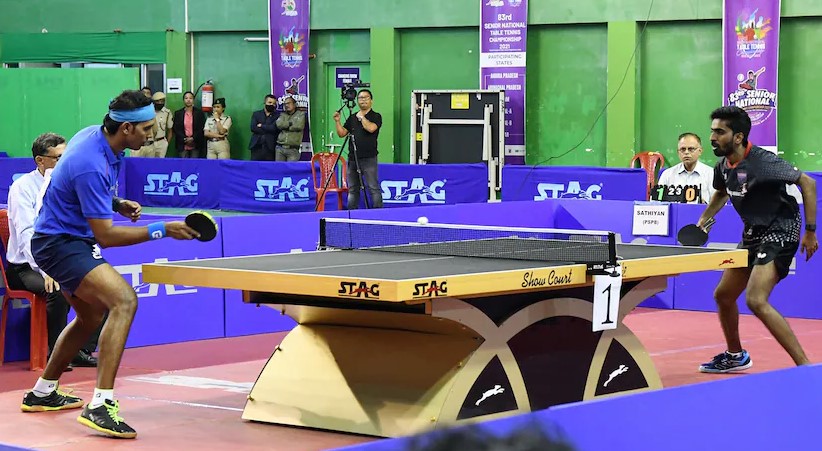Table tennis, often regarded as a high-speed and tactically intense sport, has secured a formidable presence in India’s athletic domain. The ascent of Indian table tennis players is noteworthy, showcasing their prowess across national and international tournaments. This narrative delves into the evolution and significant achievements of prominent figures within this arena. These stalwarts have not just excelled regionally but have also enhanced India’s stature on the international stage, spotlighting the nation’s capabilities in this swiftly-moving sport. Their accounts are a testament to more than just triumphs or setbacks; they embody the enduring spirit and strategic finesse essential for advancing table tennis throughout India. As we delve deeper into the profiles of these standout athletes, we aim to capture the unique attributes that define their contributions and continue to shape the dynamic trajectory of table tennis in India. This exploration not only celebrates their individual victories but also underscores their collective impact on nurturing a vibrant table tennis culture in the country.
Historical Context of Table Tennis in India
The narrative of table tennis in India is rich and diverse, tracing its roots back to the early 20th century when it was primarily a leisure activity among the elite. However, it was not until the 1950s that the sport began to organize formally, with the establishment of the Table Tennis Federation of India (TTFI) in 1954. This pivotal moment marked a new era for Indian table tennis players, as the nation started participating in international competitions.
India’s early achievements in the sport were modest yet promising. The 1950s and 1960s saw Indian paddlers make their mark in Asian competitions, setting the stage for future talents. One of the first notable successes came in the form of participation in the Asian Games, where Indian players demonstrated their potential against more established teams.
The development of table tennis in India has always been influenced by dedicated coaching and the establishment of multiple state-level associations, which fostered local talent and organized regular national tournaments. These structures helped in systematically improving the skill level of players, paving the way for India to produce world-class talent.
This historical backdrop provides a glimpse into how table tennis evolved from a pastime to a serious competitive sport in India, nurtured by the dedication of its players and the strategic vision of its sporting bodies. As we explore the careers of significant players, we see how these early foundations have supported the rise of the sport in national and international arenas.

Key Indian Table Tennis Players
Achanta Sharath Kamal, renowned for his dynamic role in elevating Indian table tennis on the global scale, combines an aggressive playing style with powerful forehand loops and nimble footwork. His numerous accolades include top honors at the Commonwealth Games and a distinguished win at an ITTF Pro Tour event. Off the table, Sharath is committed to nurturing the next generation of players, thereby enriching the sport’s foundation in India.
Manika Batra, a pioneering figure in indian table tennis players, has rapidly ascended to prominence with her remarkable performances, notably at the 2018 Commonwealth Games where she secured several medals, including a groundbreaking gold in singles. Her tactical use of pimpled rubber to create deceptive spins often confounds her competitors. More than her personal achievements, Manika has significantly boosted the profile of women’s table tennis in India, inspiring countless young girls to engage in the sport.
Sathiyan Gnanasekaran, distinguished by his speed and agility, has rapidly climbed the ranks in international table tennis. Known for his quick strokes and strategic mindset, he has reached his highest career ranking while making strong impressions at ITTF events and World Championships. Sathiyan embodies the fresh talent emerging from India, with his resilient and innovative approach to the game.
Beyond these luminaries, other figures such as Neha Aggarwal and Ankita Das have also left indelible marks on Indian table tennis. Neha, post-retirement, focuses on sports education to elevate the sport’s reach, while Ankita, known for her vigorous play at the 2012 London Olympics, continues to inspire the next generation. Their contributions, alongside the achievements of Sharath, Manika, and Sathiyan, illustrate the vibrant and evolving landscape of Indian table tennis, underscoring its rising prominence on the international stage.
Achievements on the Global Stage
Indian table tennis has witnessed a substantial ascent in recognition, driven by stellar performances at major international venues like the Commonwealth Games, Asian Games, and World Championships. The impact of these achievements on the global perception of Indian table tennis cannot be overstated, marking a significant evolution from being regional contenders to becoming notable figures on the world stage.
At the Commonwealth Games, Indian paddlers have consistently excelled, bringing home multiple medals that highlight the country’s growing prowess. Notably, Sharath Kamal and Manika Batra emerged as household names after their gold medal performances in various editions of the games. Their victories underscored the potential of Indian athletes in competing against top-tier global talent.
Similarly, the Asian Games have served as a critical platform where Indian table tennis players tested their mettle against the continental best. Achievements at this level, including unexpected victories and hard-fought matches against higher-ranked opponents, have provided the players with invaluable experience and exposure.

The World Championships, while presenting a stiffer competition, have seen Indian players making significant inroads. Occasional wins and competitive performances against world-class opponents at this elite level have not only improved their individual rankings but also enhanced the overall reputation of India in the international table tennis community.
These international successes have had a profound effect on how Indian table tennis is viewed globally. Each medal won and every match fought valiantly on these stages has contributed to altering the international narrative, slowly establishing India as a formidable force in the world of table tennis.
Training and Development in Indian Table Tennis
The landscape of training and development for Indian indian table tennis players has evolved significantly, with state-of-the-art facilities and structured coaching frameworks. Across India, a number of sports academies and government-sponsored centers are dedicated to nurturing the next generation of table tennis talent. These centers are equipped with modern equipment, professional-grade tables, and robotic training aids that help sharpen player skills and techniques.
Government initiatives such as the Khelo India programme have been pivotal in providing financial and infrastructural support to these academies. Such support includes scholarships for promising players and grants for upgrading training facilities. This has allowed for a more systematic approach to talent development, focusing on early identification and continuous training of potential table tennis stars.
Moreover, private enterprises and former players have also invested in the creation of specialized table tennis academies, such as the one founded by former national champion Kamlesh Mehta. These institutions not only provide high-level coaching but also focus on physical conditioning, mental strength training, and tactical understanding of the game, all essential for competing at international levels.
The combination of government backing and private investment has created a robust ecosystem for the development of indian table tennis players, ensuring that players receive comprehensive training that aligns with international standards. As these efforts continue, the future of Indian table tennis looks promising, with a clear pathway for aspiring athletes to emerge as global contenders.
Future of Indian Table Tennis
As Indian table tennis enters a new era, the pipeline of emerging talents promises a bright future. Young players like Manav Thakkar and Diya Chitale are already making waves in the junior circuits, showcasing skills that could well translate to senior success. Ayhika Mukherjee, another rising star, has demonstrated resilience and skill at international events, pointing towards a robust generation ready to step onto the global stage.
Over the next decade, the growth of table tennis in India is expected to accelerate due to several key factors. Enhanced infrastructure, increased funding from both public and private sectors, and a growing base of grassroots programs aim to broaden access and nurture talent from an early age. Additionally, the success of leagues such as the Ultimate Table Tennis has already begun to change the landscape, providing domestic players with valuable experience against top international competitors.
The integration of advanced training methodologies and technology, like biomechanics and analytics, will further refine the preparation of Indian players, making them more competitive on the world stage. As these elements converge, the expectation is not just to participate but to consistently challenge for podium finishes in major international tournaments.
Securing India’s Place in Global Table Tennis
The potential of Indian table tennis to make a significant mark globally has never been more tangible. With a solid foundation of veteran prowess and emerging talent, India is poised to ascend in the ranks of international table tennis. The ongoing efforts to improve training facilities and increase competitive opportunities domestically are setting the stage for a new chapter in Indian sports.
Players such as Sharath Kamal and Manika Batra have laid down the path with their impressive achievements and resilience. Their careers serve as both inspiration and a blueprint for success that upcoming players are eager to follow. As India continues to nurture its pool of talent and invest in enhancing the sport’s profile, the next decade could see Indian paddlers becoming regular contenders at the world championships and the Olympics.
The convergence of talent development, infrastructural improvements, and professional exposure through leagues is set to propel Indian table tennis to new heights. This holistic approach will not only elevate the sport within India but also enhance its prestige on the global stage, making it a formidable force in the world of table tennis.

Recent Comments